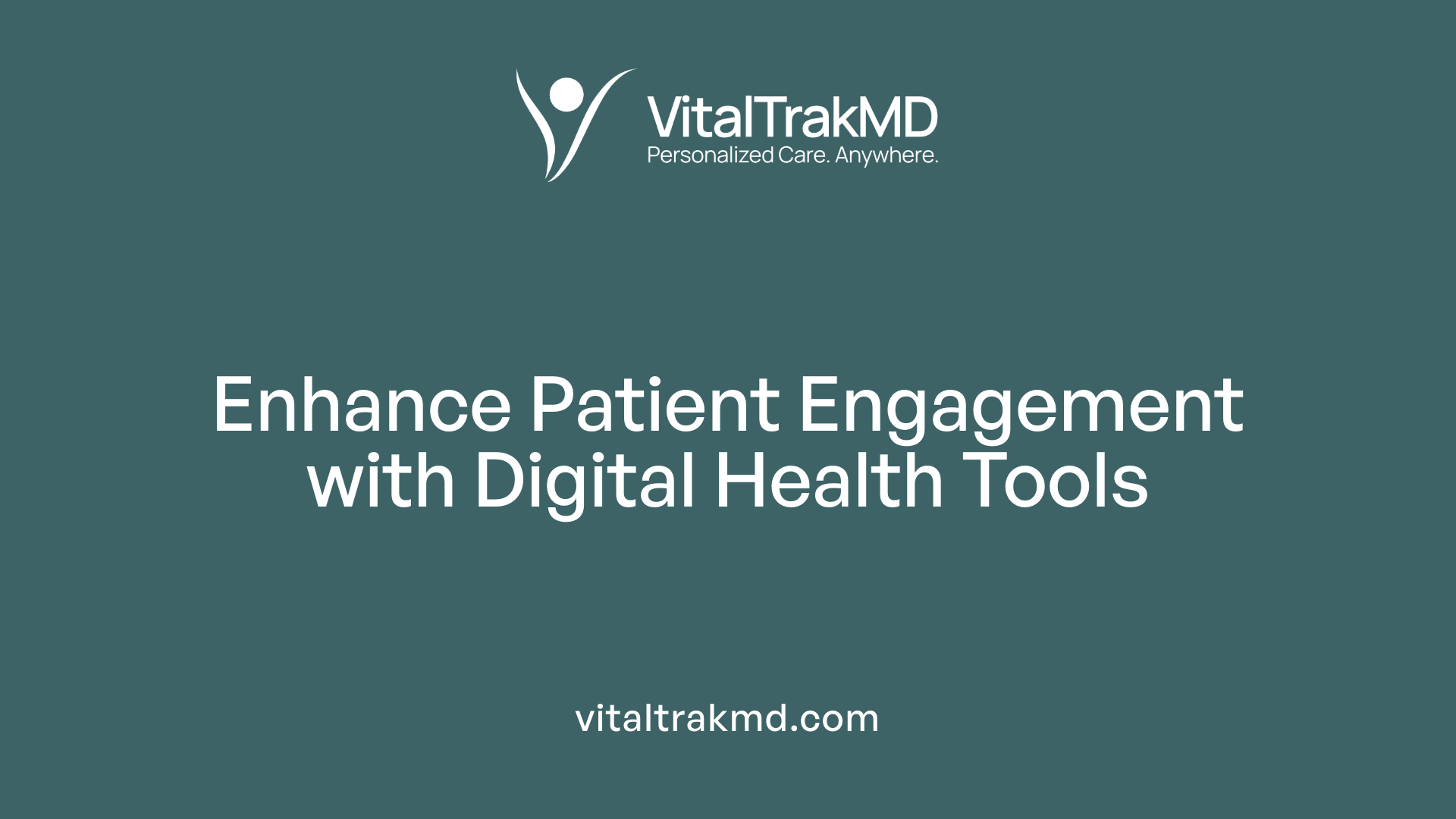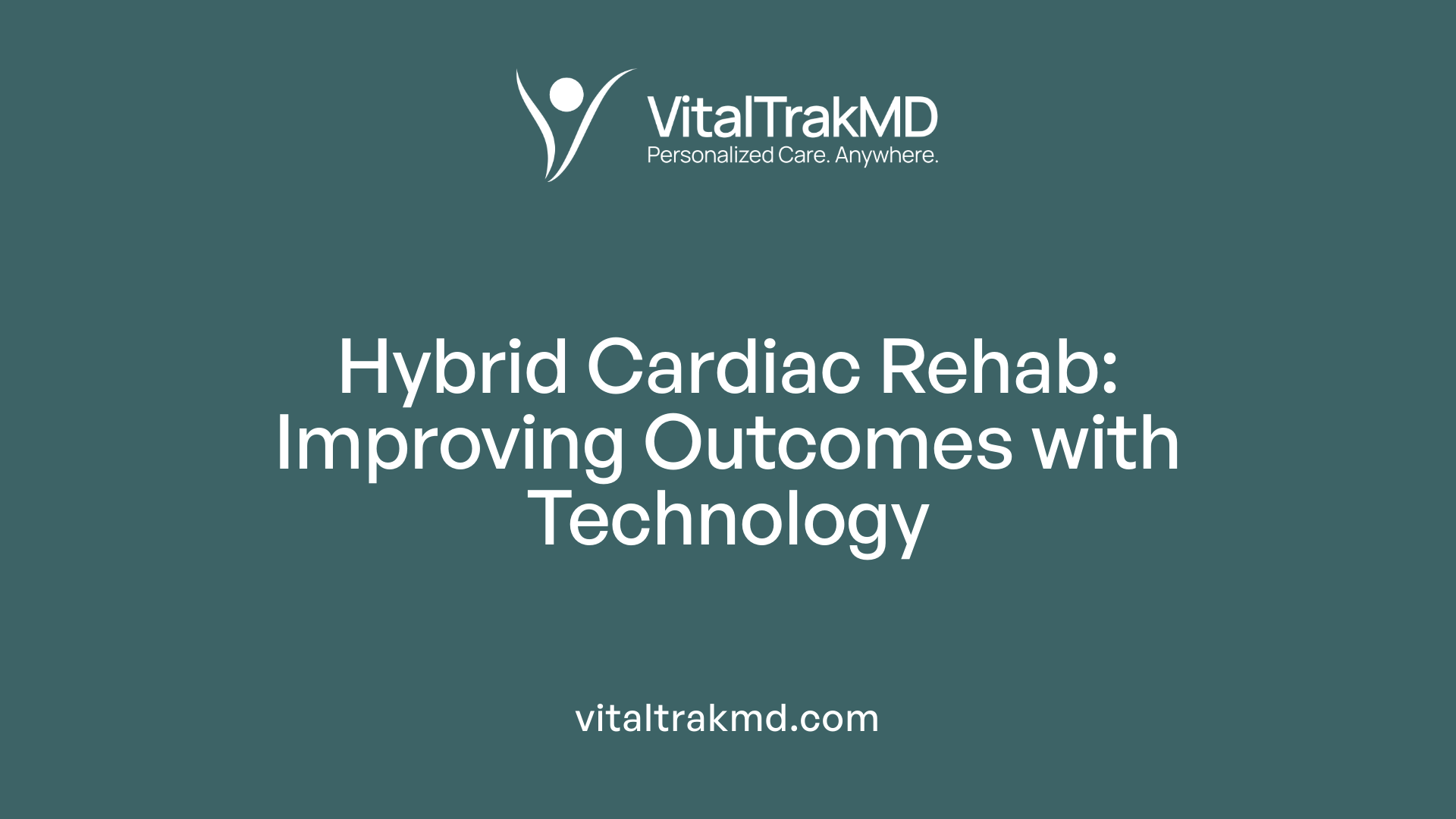How Hybrid Healthcare Improves Adherence to Heart-Healthy Plans

Revolutionizing Heart-Healthy Lifestyle Adherence with Hybrid Healthcare
The evolution of healthcare delivery has ushered in a new era where hybrid models seamlessly integrate in-person and digital care, significantly enhancing patient adherence to heart-healthy plans. This approach combines traditional clinical visits with cutting-edge telehealth and remote monitoring technologies, making cardiovascular care more accessible, personalized, and effective. By understanding the mechanisms, benefits, and evidence supporting hybrid healthcare, we can appreciate its vital role in improving outcomes for patients with existing cardiovascular conditions or those at risk.
Integrating Digital Tools to Support Consistent Care

How do digital, remote, and telemedicine tools support patient adherence to heart health strategies?
Digital health technologies have become vital components of hybrid healthcare models, especially in managing cardiovascular health. Wearable devices and implantable sensors enable continuous monitoring of vital signs such as blood pressure, heart rate, and activity levels. These tools help detect early warning signs of issues like hypertension or heart failure, prompting timely medical interventions.
Remote consultations, often conducted via video or phone, allow patients to discuss concerns with healthcare providers without needing to visit clinics physically. Patient portals provide a secure platform for ongoing communication, access to medical records, medication management, and educational content, fostering active patient engagement.
Mobile health (mHealth) apps offer tailored educational resources, medication reminders, and lifestyle tips, making self-care more accessible and manageable. For example, SMS reminders have been shown to improve medication adherence among cardiovascular patients, reducing hospital readmissions and improving clinical outcomes.
Telehealth services bridge gaps created by transportation issues, mobility constraints, or geographic barriers, maintaining continuous and personalized care. In particular, during the COVID-19 pandemic, increased reliance on virtual visits prevented care disruptions and supported sustained adherence.
Integrating data from these digital tools into healthcare systems allows continuous quality assessment and real-time decision-making. Automated alerts for non-adherence or abnormal vitals can prompt timely provider intervention.
Overall, these technologies enhance patient involvement in their care, promote adherence to medication and lifestyle modifications, and lead to better long-term health outcomes.
Tools and Technologies in Hybrid Cardiovascular Care
| Tool/Resource | Purpose | Benefits |
|---|---|---|
| Wearable devices & sensors | Continuous health data collection | Early issue detection, personalized adjustments |
| Remote consultations & portals | Ongoing communication & education | Increased access, patient engagement |
| Mobile health apps | Medication reminders, educational content, self-management | Improved adherence, tailored lifestyle support |
Hybrid Care's Role in Enhancing Adherence and Patient Engagement

How do hybrid healthcare approaches improve patient adherence to heart-healthy plans?
Hybrid healthcare models combine face-to-face visits with virtual care options, creating a more individualized and accessible approach to managing heart health. By offering both in-person consultations and telehealth services like virtual visits, remote patient monitoring, and digital health tools, patients receive continuous support regardless of their location or schedule.
Real-time feedback from connected devices—such as blood pressure monitors or medication adherence reminders—allows healthcare providers to monitor progress actively and intervene early if needed. This constant oversight encourages patients to stay committed to their treatment plans, including medication adherence and lifestyle changes.
Reducing logistical challenges, such as transportation or time constraints, makes it easier for patients to participate consistently in their care routines. For example, home-based cardiac rehab programs or virtual education sessions empower patients to follow structured exercises and dietary guidelines at their convenience.
Furthermore, the flexible nature of hybrid care models enhances patient safety and satisfaction. It allows timely interventions, reduces hospital readmissions, and supports ongoing patient engagement by using digital tools, personalized communication, and regular check-ins. Overall, this integrated approach fosters sustained adherence to heart-healthy behaviors, ultimately improving health outcomes and quality of life.
Mechanisms of Hybrid Healthcare in Cardiovascular Disease Management

What are the benefits and mechanisms of hybrid healthcare models in enhancing cardiovascular health adherence?
Hybrid healthcare models blend in-person services with virtual care to improve how patients manage cardiovascular diseases. One core mechanism involves remote monitoring, where connected devices and sensors continuously collect vital signs like blood pressure, heart rate, and oxygen levels. These real-time data streams are shared with healthcare teams, enabling timely alerts and interventions.
This continuous flow of information allows providers to personalize feedback for each patient. For example, if a patient’s blood pressure readings exceed safe thresholds, clinicians can quickly intervene through virtual consultations or medication adjustments. This immediate response helps maintain optimal control over conditions such as hypertension or heart failure.
Digital tools like mobile health apps and web-based platforms facilitate ongoing patient engagement. Patients receive structured educational content, reminders for medication, and support for lifestyle changes, which promote adherence. Advanced sensor technologies, often combining optical and magnetic sensors, improve the accuracy and reliability of remote measurements, making early detection of issues possible.
These hybrid systems significantly reduce barriers to care, such as transportation or limited mobility, by enabling virtual visits at any time. Better communication channels between patients and providers foster trust and motivation, supporting sustained behavioral modifications. Overall, integrating these digital and clinical components leads to improved adherence to treatment plans and better cardiovascular outcomes.
Evidence Supporting Hybrid Healthcare Effectiveness

What evidence exists regarding the effectiveness of hybrid healthcare in improving adherence to heart-healthy lifestyles and treatments?
Research shows that hybrid healthcare models can significantly boost how well patients stick to heart-healthy routines and treatments. One notable study from Chile compared hybrid cardiac rehabilitation with traditional in-person programs. The results indicated that hybrid rehab was just as effective at preventing future cardiovascular events, with patients showing higher participation and adherence to supervised sessions.
Further evidence from studies in England and Spain highlighted that combining in-person care with virtual visits improved patient engagement, knowledge, and physical activity levels. Patients reported high satisfaction with this flexible approach, which made it easier to follow medical advice and lifestyle changes.
Digital tools such as wearable devices, mobile health apps, and remote monitoring systems play a vital role. These technologies enable continuous tracking of health metrics, support medication adherence, and promote lifestyle modifications. Results from large observational trials and clinical implementations showed that patients managed with hybrid approaches had better control over risk factors, and some even experienced reduced mortality and fewer adverse events.
Ultimately, the combined in-person and virtual care approach helps sustain long-term health behaviors and ensures that patients stay on track with their heart-healthy plans, leading to improved outcomes.
| Evidence Source | Study Type | Main Findings | Additional Details |
|---|---|---|---|
| Chilean Cardiac Rehab Study | Randomized Trial | Non-inferior to standard rehab with higher session adherence | Improved patient engagement, support via digital tools |
| England & Spain Hybrid Programs | Observational | Increased activity, better knowledge, high satisfaction | Enhanced patient involvement and lifestyle compliance |
| Digital Monitoring Trials | Multiple | Reduced mortality, better risk factor management | Use of wearables, mobile apps, remote monitoring systems |
This collection of evidence underscores that hybrid healthcare models effectively support sustained management of cardiovascular health, minimizing the risks of adverse events and mortality.
Implementation and Outcomes of Hybrid Cardiac Rehabilitation
 Hybrid care in cardiac rehabilitation combines traditional, supervised in-clinic sessions with remote, home-based support through telehealth and digital tools. Initially, patients undergo structured rehabilitation under direct medical supervision at a facility. Afterward, they transition to a home-based program supported by virtual visits, phone check-ins, educational resources, and remote monitoring devices.
Hybrid care in cardiac rehabilitation combines traditional, supervised in-clinic sessions with remote, home-based support through telehealth and digital tools. Initially, patients undergo structured rehabilitation under direct medical supervision at a facility. Afterward, they transition to a home-based program supported by virtual visits, phone check-ins, educational resources, and remote monitoring devices.
This blended approach promotes continuous engagement, improves convenience, and reduces barriers like travel time and costs. It employs secure, accessible technology such as video calls, mobile health apps, and remote sensors to monitor vital signs, physical activity, and medication adherence.
Multiple studies have shown that hybrid models are not only safe and feasible but also effective. Clinical evidence indicates that hybrid cardiac rehabilitation is noninferior to standard programs in preventing recurrent cardiovascular events and lowering mortality. Some research even suggests higher adherence and participation rates, likely due to increased flexibility and personalized support.
By extending care outside the traditional clinical setting, hybrid programs can decrease hospital readmissions and emergency visits, improving overall outcomes. They are particularly beneficial for patients in remote areas or with mobility challenges, making cardiovascular care more accessible and tailored.
Ongoing efforts aim to optimize program design by integrating advanced telehealth technologies. These innovations help manage chronic cardiovascular conditions more effectively, demonstrating that hybrid models are a promising solution for improving heart health.
Charting the Future of Personalized Heart Care
Hybrid healthcare models, by blending in-person and digital resources, are transforming cardiovascular disease management and patient adherence strategies. These approaches address key barriers, personalize treatment plans, and facilitate continuous engagement, which are crucial for improving health outcomes. As the evidence base grows and technology advances, hybrid models will become increasingly vital in delivering efficient, accessible, and patient-centered heart care, ultimately reducing the burden of cardiovascular diseases and enhancing quality of life.
References
- How the Hybrid Care Model is Transforming Patient Access
- What Is Hybrid Healthcare? | Tools, Benefits, and Solutions
- Hybrid Healthcare System Patient-Centered Care Model
- The role of mHealth for improving medication adherence in ...
- ChristianaCare to expand medication adherence program
- Evaluating the effectiveness of a comprehensive patient ...
- Development of an evidence-based hybrid model in the ...
- How to Enhance Value-Based Care with Hybrid Care Models
- Designing for flexibility in hybrid care services - PubMed Central
Recent articles
Want to Feel Better and Live Healthier?
Join hundreds of patients taking control of their health with personalized care that fits their life – not the other way around.
Rated 4.8/5 by 32+ customers







